Lesson from the history- Top 5 of the biggest asset bubbles in the history

Table of Content
Today we will learn about Top 5 of the biggest asset bubbles in the history
An asset bubble takes place when the cost of a financial or fiscal asset grows to levels that are very well raised with either old patterns, the asset’s basic value, or both. The issue is that as an asset’s basic value can hold a very broad area, an asset bubble is usually confirmed by an imprecise presumption that an asset’s fundamental value has increased, signifying the asset has a value above that it is. You will find the top 5 of the biggest asset bubbles in history, from which 3 asset bubbles happened in the late phases of the 1980s.
A few bubbles are simpler to foretell than others. When we talk about the stock market, conventional valuation data can be then used to check gross overvaluation. Say, an equity index that is exchanging at a P/E ratio that’s two times the traditional average is possible in the bubble region. Even though more study can be then required to make a final decision. Different bubbles are tough to discover and can only get recognized in retrospect.
Which are the top 5 of the biggest asset bubbles in the history?
1. Tulipmania or The Dutch Tulip Bubble in 1637
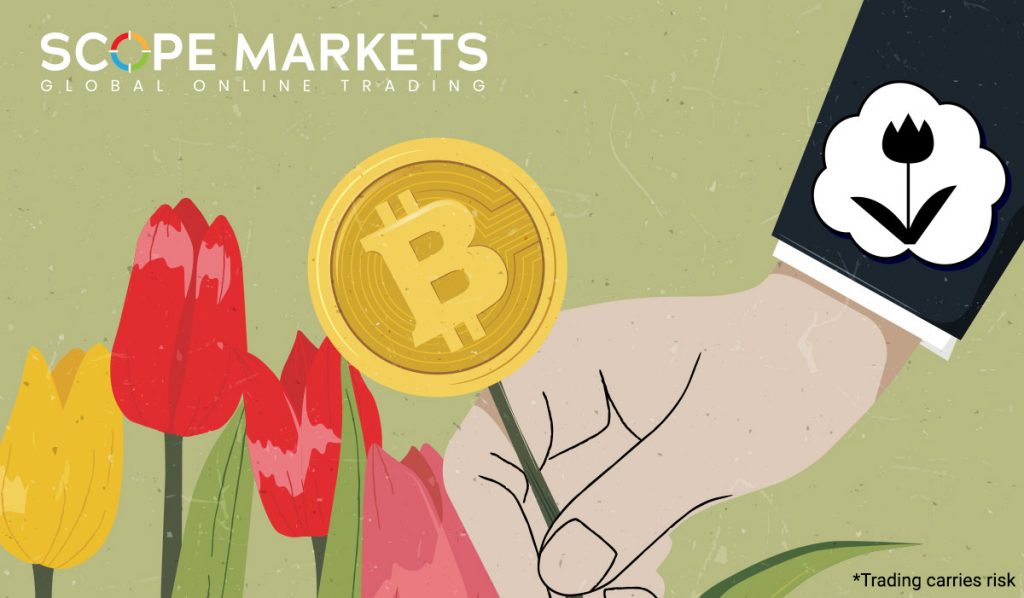
Tulipmania (The Dutch Tulip Bubble) that seized Holland in the 1630s is one of the most actively documented instances of an irrational asset bubble. Throughout this Bubble, tulip costs increased twenty times in Nov 1636 and Feb 1637 before falling 99% by May 1637. It is generally considered one of the top 5 of the biggest asset bubbles in history.
In Feb 1637, as springtime came near and the heads were near to flowering, user confidence faded and the market fast affected. Since the price formation fell, Mackay stated that 100s who, months before, had started doubting that there was such a thing as debt in the land fast got themselves the holders of some bulbs, which no one will buy. Although they provided them at one-quarter of the amount they had reimbursed for them. The trial happened, and a government committee conducted in May 1638 that tulip agreements could be then revoked upon the amount of 3.5% of the accepted cost.
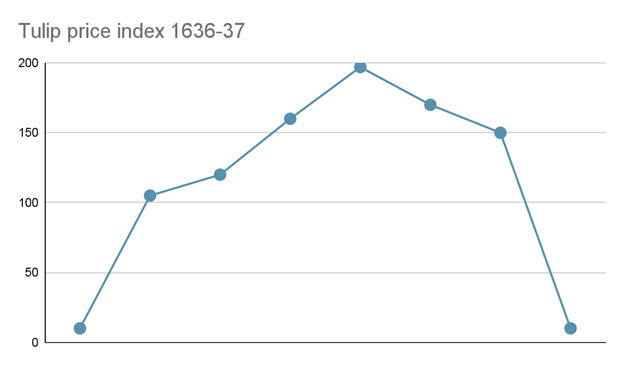
Since bubbles generally do, Tulipmania used a broad cross-section of the Dutch people. And, at their peak point, a few tulip bulbs set costs above the cost of some homes.
2. The Bubble of the South Sea in 1720
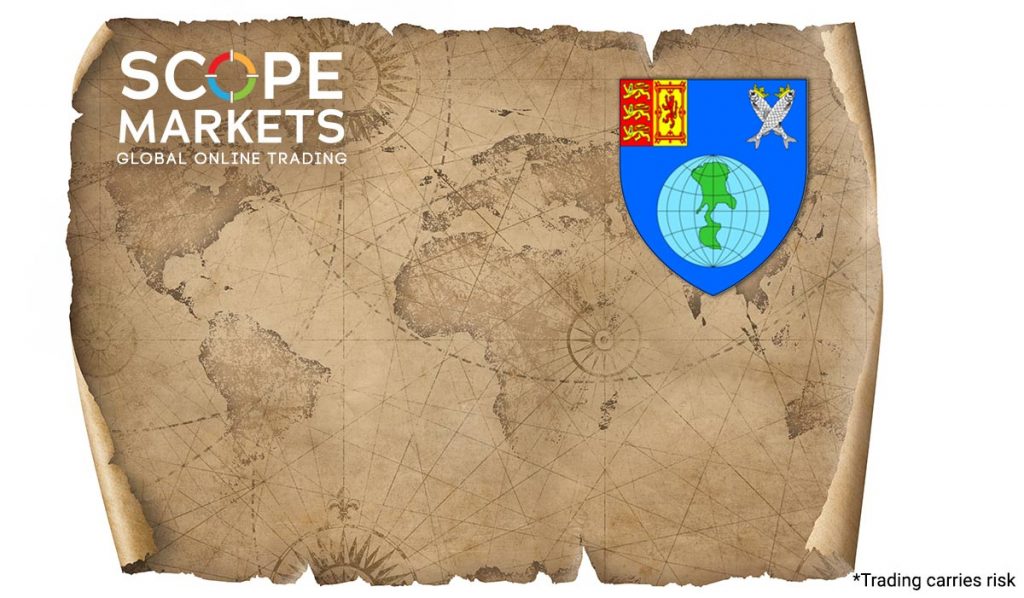
The 1720’s Bubble of the South Sea was usually created by a more problematic combination of events than Tulipmania. The South Sea Firm was then made in 1711 and confirmed copyright by the British government on all trades within the Spanish provinces of South America. Hoping a recurrence of the Company of East India achievement, which gave England a viable trade with India, stockholders rebuilt stocks of the South Sea Firm.
Since its leaders distributed great fictions of incredible wealth in the South Seas, stocks of the organization increased over eight times in 1720. That was from £128 in Jan to £1050 in June, previous to falling in the next months and creating a tough financial crisis. Thus, it is regarded as one of the top 5 of the biggest asset bubbles in history.

Impact on British Debt
In 1720, following John Law’s instance in France, the organization exercised to take over the whole British sovereign debt. When the plan got declared to Parliament, the firm’s stock prices started rising as stockholders played on the change plan. The plan was then approved by the House of Lord on 7 April 1720. Following the government, executives had been getting bribed with hidden share allocations.
Thus, to make the deal much engaging, the organization overblown the worth of its shares. On 14th April, £2 mn of South Sea Organization shares were being given to the people at £300 each share. As well as its subscription sold out in an hour. The organization created many more share atonement. In which all sold out, with the users showing all social groups.
Mackay remarks that the subscription for this ultimate organization sold out. Also, the contented administrator quickly escaped to the region. Concerned about the opponents from the bubble organizations and in a try to maintain their stock price, the South Sea Organization influenced the authority to legislate the Bubble Act in Jun 1720. The law stopped the institution of the novel organizations without government support. As well as permitted actual organizations only to bring out those plans that were generally guided by their contracts.
3. Stock Market and Real Estate Bubble of Japan (1989)

In the current time, asset bubbles now and then get stoked by much stimulative fiscal policy. Japan’s financial bubble of the 1980s is a perfect instance. The JPY’s 50% growth in the initial 1980s activated a Japanese collapse in 1986. Also, to control it, the administration led in a plan of fiscal motive.
These rules worked very well in that they encouraged uncontrolled speculation. Thereby, appearing in Japanese shares and residential land values were three-fold in 1985 and 1989. In 1989, On top of the real-estate bubble, the estimation of regions of the Imperial Palace in Tokyo was beyond the real-estate of California’s state. The bubble broke in 1991, fixing the phase for Japan’s next years of cost deflation and passive financial growth called the Lost Decade.

What About Japan’s Stock Market Bubble?
To be accurate, the value of the Japanese share market dropped by over $2 trillion. Also, the worth of lands in Japan have reduced by $8tn in the later phase of the 1980s or early phase of the 1990s:
The bubble of the stock market was then fired by a Japanese business discovery, called zaitech, or economic engineering, by which consideration turned out an indispensable part of business income statements. After getting reduced interest loans, businesses were capable of raising supplies on the markets. Whereas these reserves sometimes stoked capital loans, they usually were getting recycled again into extra speculative market movements.
4. The Dot-com Bubble (1990)
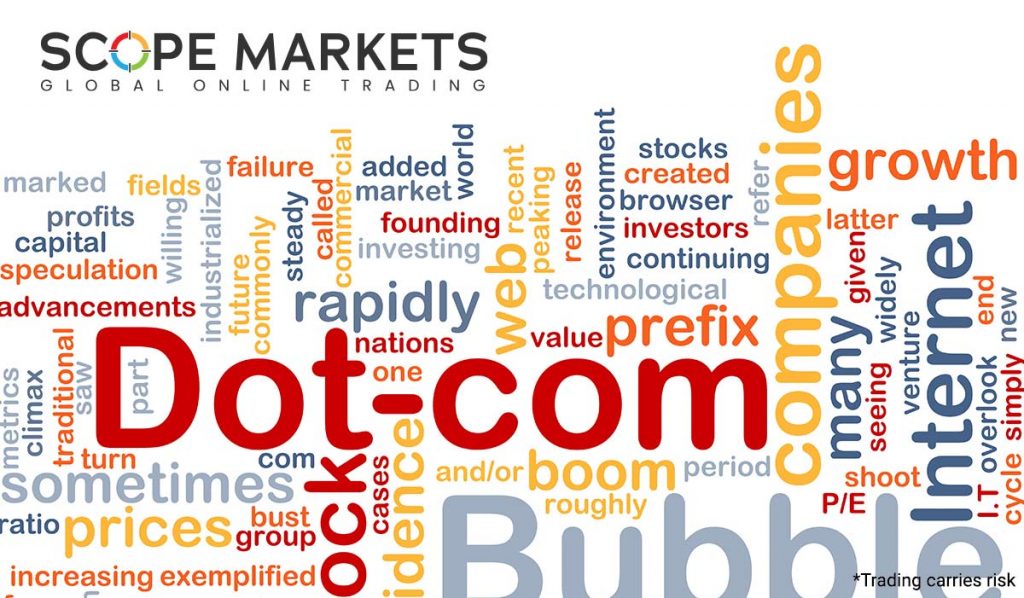
When we talk about abrupt scale and dimension, a few bubbles resemble the 1990’s dot-com bubble. At that point, the rising prevalence of the Internet activated a huge surge of consideration in modern economy trades. As a consequence, many dot-com organizations attained values of the multi-billion dollar when they went public. Thus, it comes under the top 5 of the biggest asset bubbles in history.

Later 10 times growth in prices beginning in 1990, the NASDAQ index rose in March 2000 with a market cap of $6.6tn. A resultant collapse eliminated $5.1tn in the market worth from the NASDAQ index that it will not earn back for thirteen years:
The NASDAQ Composite Index (NCI), house to various dot-com or technology companies’ shares, grew from a position under 500 at the offset of 1990 to a position of more than 5,000 in March 2000. The index fell soon, falling by approx. 80% by Oct 2002, and, activating a U.S. slowdown. The next period the Index approached a newer high was in 2015, over fifteen years later its earlier peak.
5. The Housing Bubble of the US (2007)
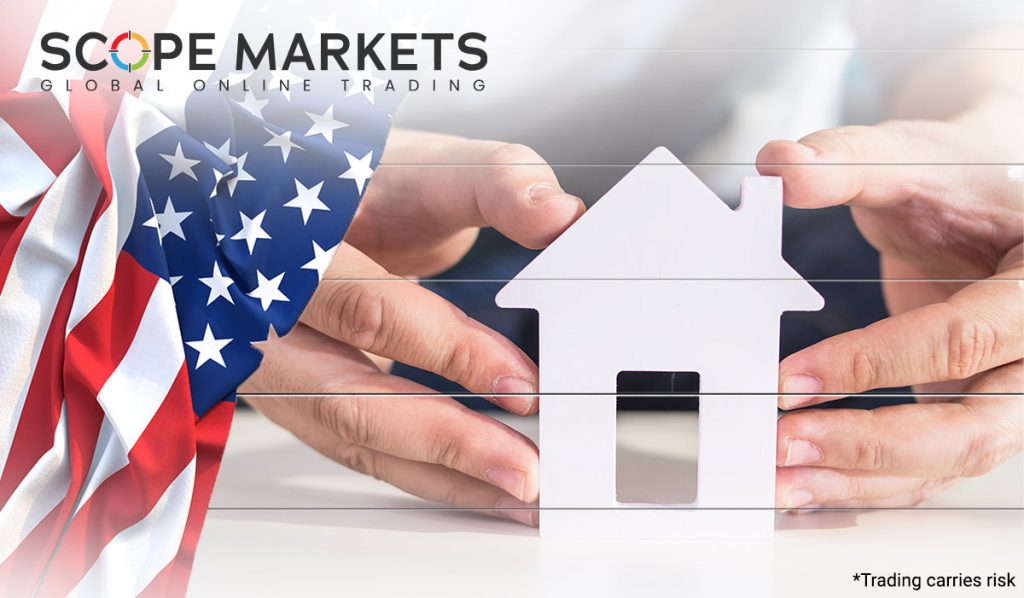
Some specialists think that the breaking of the NASDAQ dot-com bubble initiated stockholders of the US to accumulate into real estate only due to the confused notion that real estate is a strong and secure kind of asset. Whereas U.S. house costs almost grew from 1996-2006, 2/3 of that growth taken place from 2002-2006. Yet as the house costs were growing at a record speed, there were growing signs of unsuitable lease fraud, condo spinning, homes getting owned by sub-prime debtors, etc.
An issue with the housing bubble of the US is that the cost differences that moved into the bubble were far enduring in comparison to the different bubbles. This graph explains how the median U.S. housing price has grown ~70% from 2000-2007 or a yearly gain of 7.9%:

Yes, a subgroup of U.S. real-estate markets proved a more severe response than this. But the total cost varies by <2x. Also, U.S. housing costs improved within ten years of their former increase. Thus, because of its lackluster exhibiting in different criteria, it’s not the biggest of all time.
The housing costs of the US increased in 2006. Also, then began a slide that occurred in the common U.S. house missing 1/3 of its worth by 2009. The U.S. housing growth and fall, and the impact of ripple it possessed on loan-backed agreements, ended in a global financial recession that was the largest since the economic decline of the 1930s.
This time of the delayed 2000s then known as the biggest recession.
Summarizing Top 5 of the biggest asset bubbles in the history
Even though each bubble is diverse, one basic component in many bubbles is the readiness of shareholders to reject skepticism and to avoid the growing number of advisory signs. One more is that the larger the bubble, the bigger the loss it causes when it breaks or bursts. Also, the most significant is that these top 5 of the biggest asset bubbles in history, together with others all along the path, hold worthy lessons that must be noticed by each investor.
Disclaimer: This material is a marketing communication and shall not in any case be construed as an investment advice, investment recommendation or presentation of an investment strategy. The marketing communication is prepared without taking into consideration the individual investors personal circumstances, investment experience or current financial situation. Any information contained therein in regardsto past performance or future forecasts does not constitute a reliable indicator of future performance, as circumstances may change over time. Scope Markets shall not accept any responsibility for any losses of investors due to the use and the content of the abovementioned information. Please note that forex trading and trading in other leveraged products involves a significant level of risk and is not suitable for all investors.







